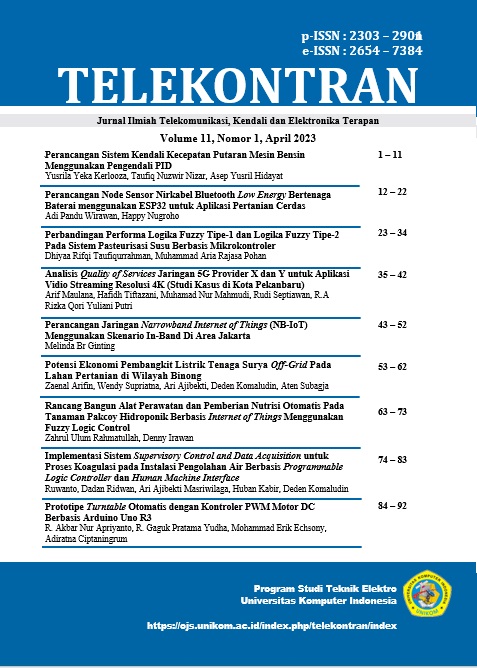Implementation of In-Band Scenarios for NB-IoT Technology in the Jakarta Area
Main Article Content
Abstract
The Internet of Things (IoT) technology has become one of the latest trends in the telecommunications industry, enabling various devices and sensors to connect and interact through networks. Narrowband Internet of Things (NB-IoT) is one of the IoT connectivity technologies that offers advantages in terms of efficient energy usage, wide coverage, and reliable connectivity. This research aims to conduct a simulation experiment to implement an In-Band NB-IoT scenario in the Jakarta area, which is a densely populated metropolitan city. The In-Band scenario refers to the use of the 900 MHz frequency in Jakarta. In the initial stage of this research, estimation calculations are performed for IoT density and connectivity requirements in the Jakarta area. Subsequently, network planning and parameter configuration are carried out using Atoll software to simulate the implementation of NB-IoT on the existing cellular network. Furthermore, analysis of network design in terms of capacity and coverage for NB-IoT services is conducted using the link budget parameter. Performance analysis is carried out for parameters such as RSRP, SINR, user connected, and throughput. The performance results are used to analyze potential use cases and signal strength for NB-IoT networks in the Jakarta area. The implementation results of the in-band scenario for NB-IoT technology in Jakarta are expected to provide insights and serve as a reference for better planning and development of IoT networks, improving efficiency and quality of connectivity in similar areas in the future.
Downloads
Article Details
Section

This work is licensed under a Creative Commons Attribution-ShareAlike 4.0 International license.
